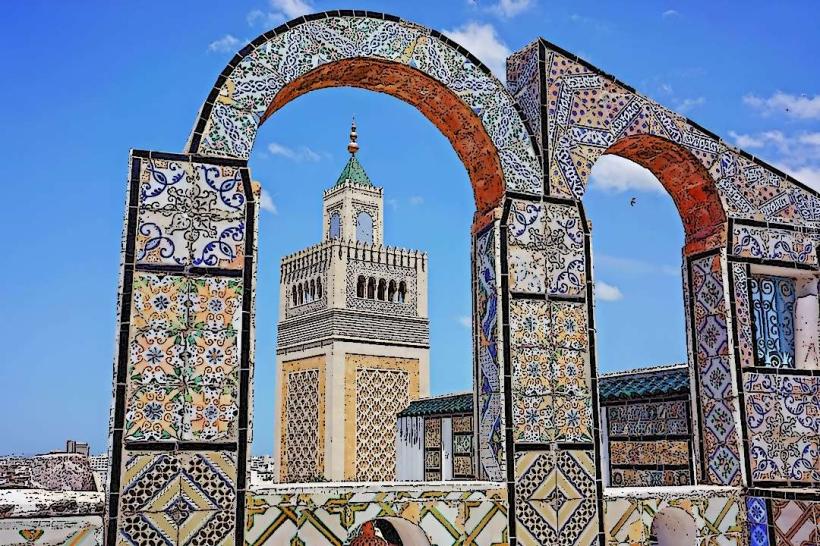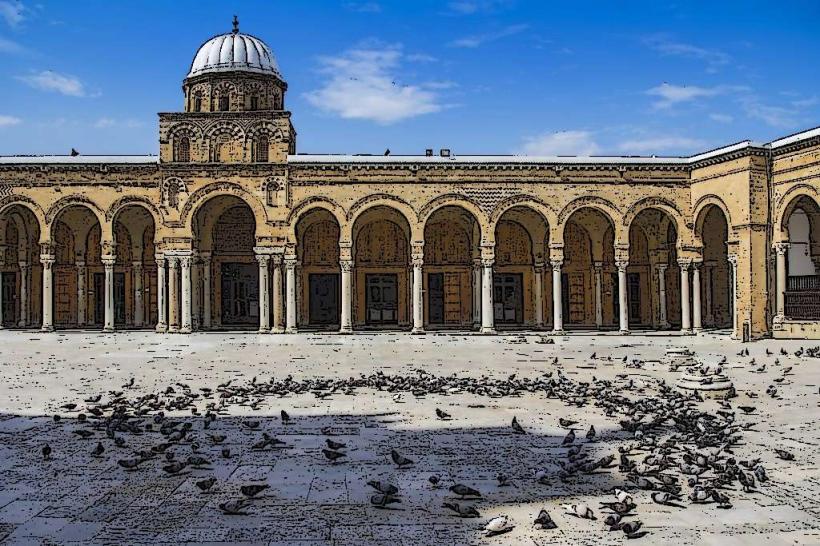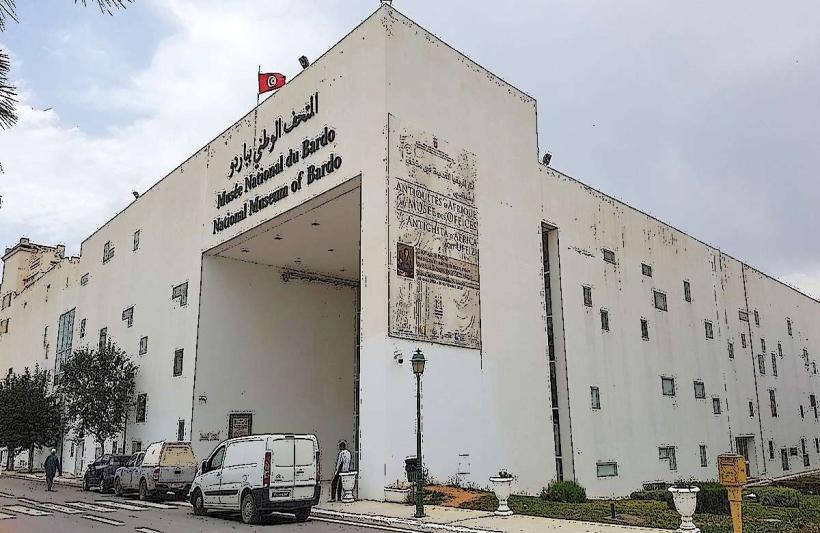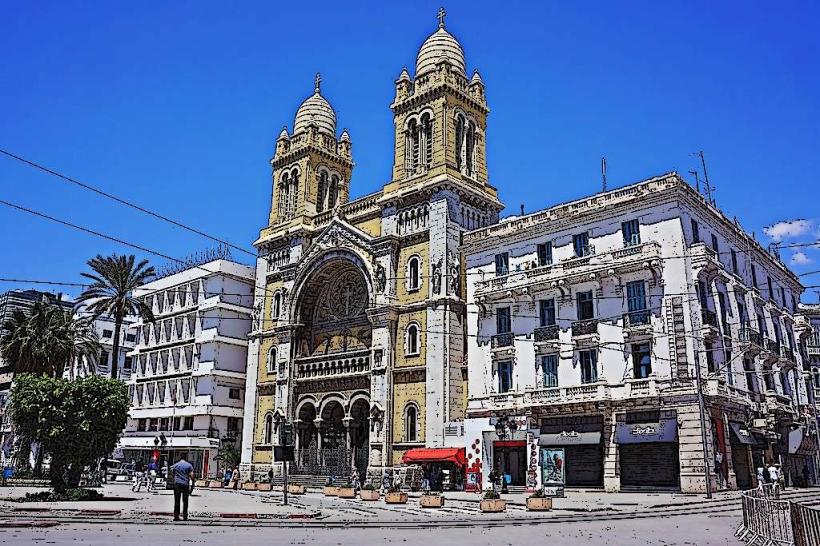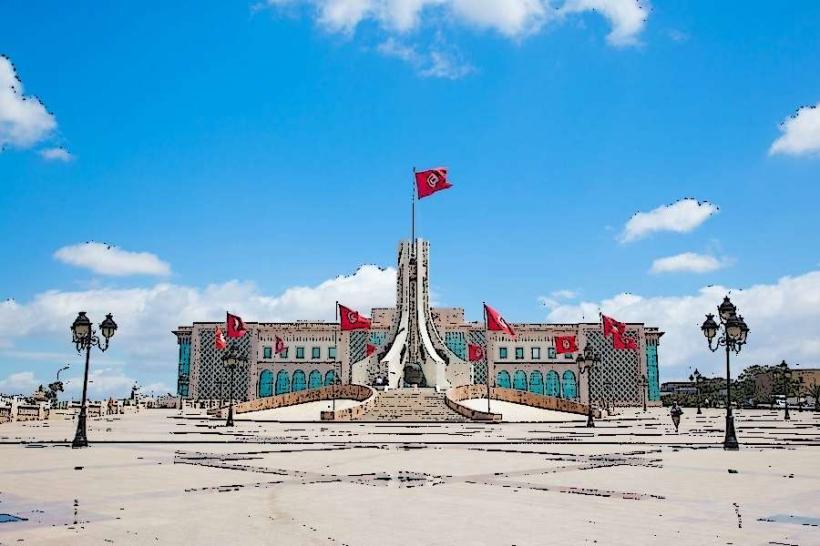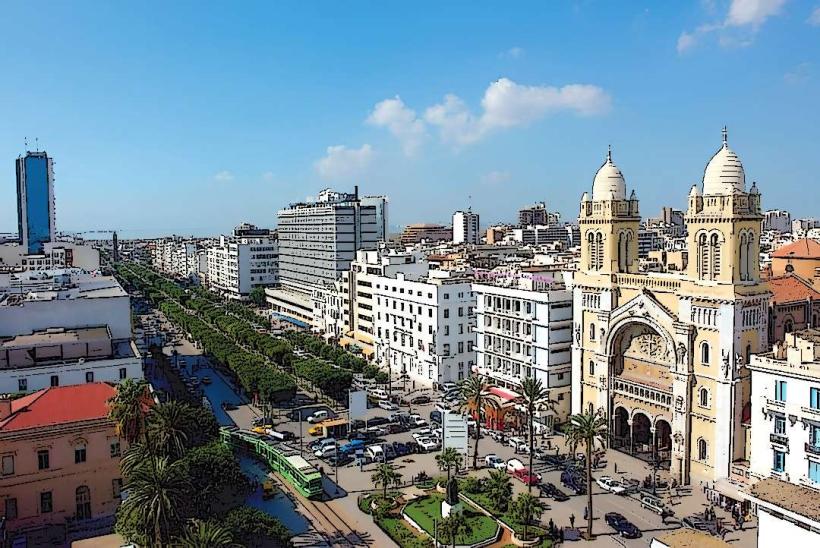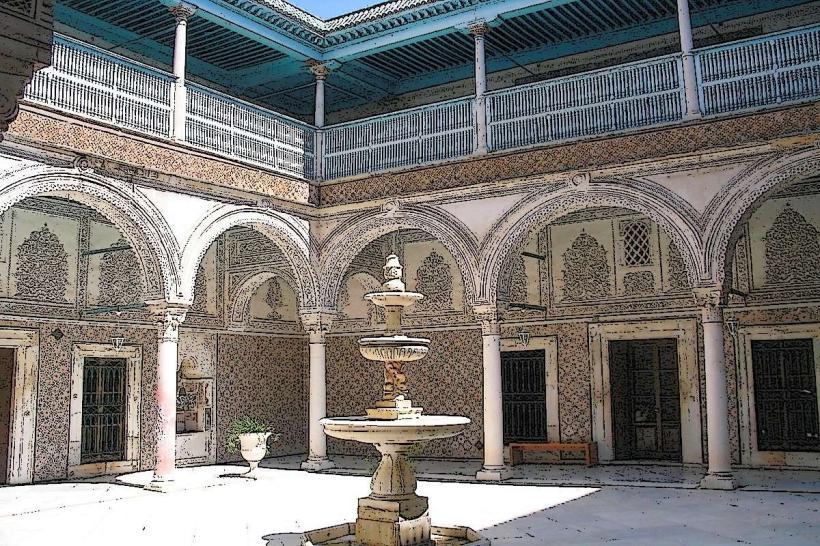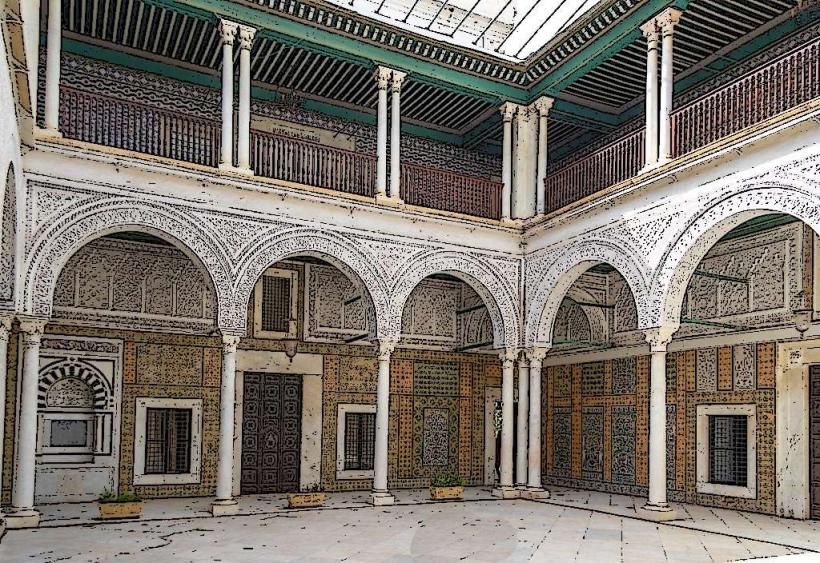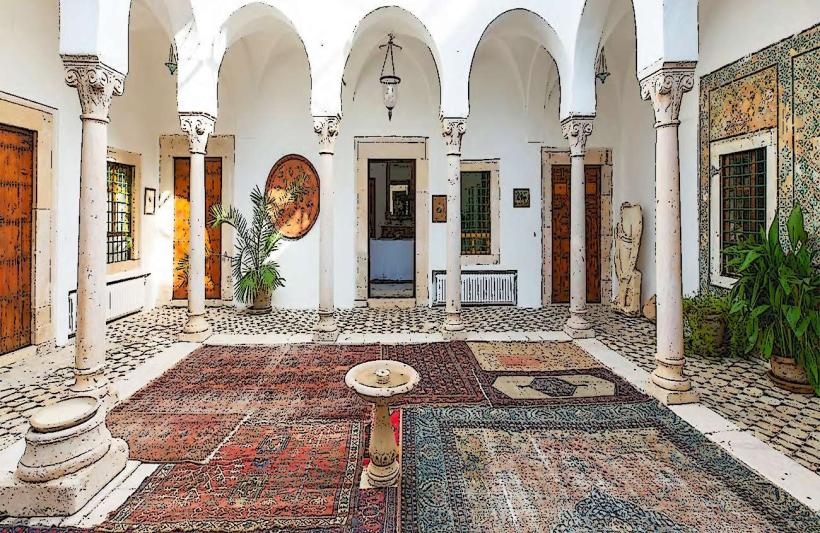Information
Landmark: Bab el Bhar (Porte de France)City: Tunis
Country: Tunisia
Continent: Africa
Bab el Bhar (Porte de France), Tunis, Tunisia, Africa
Overview
Somehow, Bab el Bhar, or the Porte de France, stands as one of Tunis’s most famous historic gates, its arch opening onto the bustle and spice-scented streets of Tunisia’s capital, and in Arabic, it’s called باب البحر (Bab el-Bhar), or “Gate of the Sea,” a name that once marked the spot where the medina opened to the salt-scented breeze of the coast.Here’s a closer glance: Bab el Bhar rose in the 13th century under the Hafsid dynasty (1229–1574), when Tunis bustled as a vibrant Islamic capital, its markets rich with the scent of spices, while the gate stood as part of the ancient defensive walls that enclosed and guarded the Medina of Tunis, a fortified city where stone ramparts once cast long shadows at dusk.Control of the gateway between the inner medina and the outside world was crucial, especially for the coastal roads winding toward the glittering blue of the Mediterranean Sea, while architectural features of Bab el Bhar began with a design meant purely for defense, its thick stone walls built to withstand attack.The gate stood solid and heavy, its single stone arch framing thick wooden doors that could slam shut to guard the city, on top of that compared to the grand, elaborate gates of other Islamic cities, this one’s design is modest, yet its wide horseshoe arch and the rough-hewn stone battlements above give it a striking presence.The gate was altered during the French Protectorate, which began in 1881, its iron hinges creaking as workers refitted them, besides they lowered it and reshaped parts of the structure, stripping away most of its timeworn defensive strength.Now it stands as a symbolic gateway-an arch you can roam beneath-marking the passage from the Arab medina to the European-built Ville Nouvelle, moreover they fixed a plaque above the gate reading “Porte de France,” marking its recent role as a cultural and geographic boundary between two sharply different parts of the city.Bab el Bhar has long stood as the gateway between Tunis’s winding medina streets and the broad, European-style boulevards the French laid out in the late 1800s and early 1900s, consequently north of the gate, Avenue Habib Bourguiba stretches out-Tunisians call it their Champs-Élysées-its sidewalks dotted with busy cafés, glowing shopfronts, and graceful colonial facades, mildly Head south and you’ll slip into the medina’s maze of alleys, bustling souks, and centuries-heritage mosques, their stone walls cool to the touch in the shade, equally important the gate marks a crossing between two worlds-step through its arches and you pass from the ancient Islamic heritage of Tunis to the European character shaped by colonial rule.I think, These days, Bab el Bhar draws crowds as both a must-perceive landmark and a favorite spot where locals and travelers meet, often under the shadow of its weathered stone arch, meanwhile for many travelers, it’s the first location they head before winding through the medina’s maze of narrow alleys scented with spice.The gate buzzes with life-street vendors sizzling skewers, cafés spilling chatter into the air, and colorful performances lighting up the square, especially when festivals or national holidays roll around, after that though it no longer anchors a city wall-the bricks were mostly pulled down by the 1800s-Bab el Bhar still stands as a striking reminder of Tunisia’s history, resilience, and blend of cultures, its stone arch warmed by the late-afternoon sun.Symbolic Gateway: More than a medieval relic, it stands as a vivid reminder of Tunis’s layered past, from worn stone arches to centuries of change, likewise cultural Juxtaposition: At Bab el Bhar, you can feel the shift-narrow, shadowed alleys of the Islamic medina give way to wide boulevards lined with luminous café awnings in the European quarter.The gate sits within easy reach of Tunis’s top hotels, bustling cafés, and busy transit stops, so it’s a handy landmark when you’re finding your way, as well as bab el Bhar is still a modest monument, yet it carries immense weight-a gateway where you can step from the hum of today’s streets straight into centuries of Tunisian history, from the grandeur of medieval Islam to the upheavals of colonial rule and the pride of modern nationhood.
Author: Tourist Landmarks
Date: 2025-09-27

